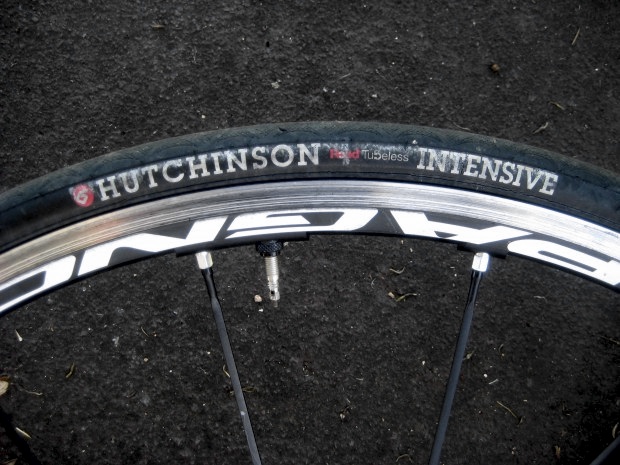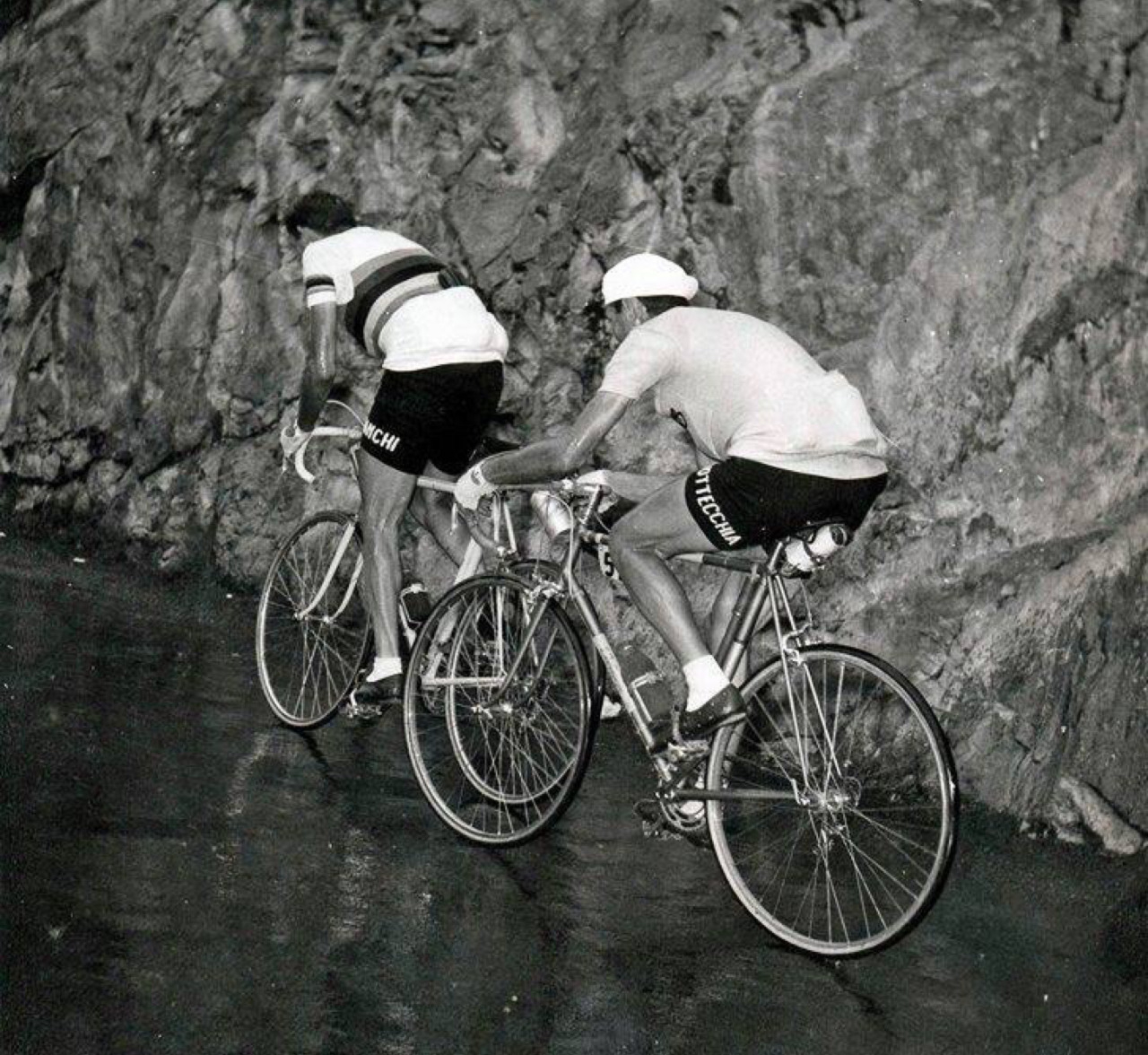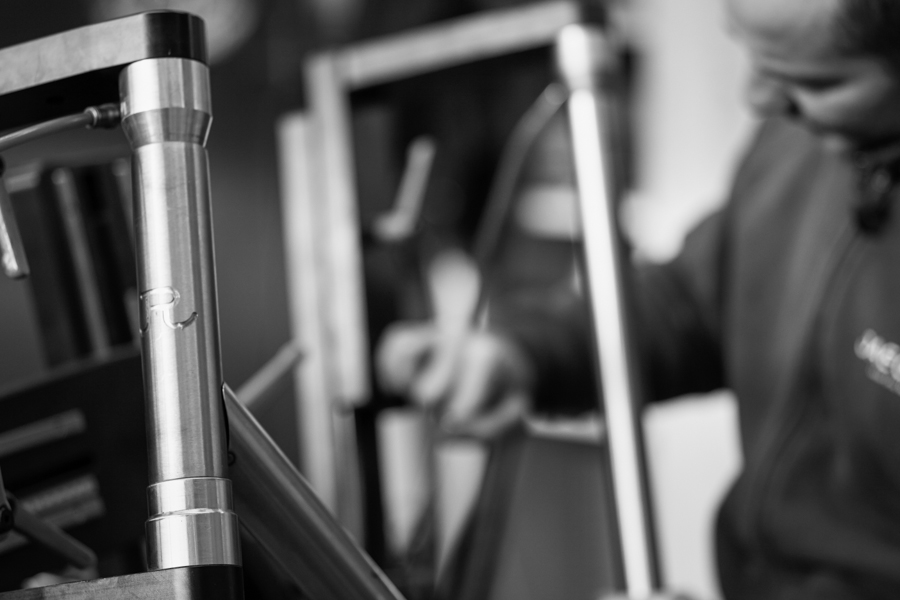The Tubeless Enigma

There must still be a few readers out there who have not followed the Dutch Monkey down the merry tubular path; for them I offer an update on an alternative. Road tubeless has been lauded as the best thing to happen to cycling since the introduction of seatpins. These have been around for years but the road version has not gathered the expected momentum. Michelin made them then discontinued, Continental* is not interested, Bontrager said they were coming out with a model or two, Maxxis has a model. Hutchinson has a nasty little near-monopoly on the road tubeless market. Basically, there are maybe six models total and Hutchinson makes three of them. The tyres are different from regular clinchers in two ways: their square carbon bead snugs into square extrusion in the tubeless specific rim and they have a butyl inner-wall layer. The bead makes an airtight seal. The addition of latex sealant inside the tyre prevents almost all air loss and self-seals.
For unexplainable reasons I was advocating for them long before I actually used them. I liked the idea of no pinch-flats but moving to 25mm tyres mostly solved that. I liked the idea of using lower tyre pressure, which also was solved by going to 25mm inner-tubed tyres. It is claimed tubeless ride like sew-up tyres due to the lack of inner-tube but the tubeless tyres have a butyl coating on the inside to keep them airtight so they can’t be as supple. They may ride better than clinchers but they are heavier than sew-ups. Tubeless require forty grams of liquid sealant, there’s some more weight.
Pros
- No inner-tube means no pinch flats.
- No pinch flat worries mean lower tyre pressures.
- No inner-tube also means better ride and improved cornering.
- Sealant seals tyres automatically.
- An inner-tube can still be installed if sealant fails to work or has dried up.
- An inner-tube and regular clincher can always be installed on tubeless rims if one wants to go back to regular set-up. No harm, no foul.
- Tyre stays on rim even when deflated.
Cons
- Very limited selection of tubeless tyres and only one 25mm model.
- More expensive than most clinchers.
- Sealing process is messy, to put it politely.
- Post sealing clean up of bike is necessary.
- Periodic maintenance of tyres/sealant required.
Debatable misconceptions
- Tyres don’t seat on the rim without CO2 cartridge.
- Installing inner-tube roadside is impossible.
- Tyres are very hard to install and remove.
- Tyre stays on rim even when deflated.
I’ve been using Hutchinson Intensive tubeless tyres on Campagnolo Eurus 2-way fit wheels for nine months. I’ve had a total three punctures, all resulting in latex spew, sealing and riding. So the good news is I haven’t been sweating on the side of the road replacing inner-tubes. That never was a big problem, I can do that in seven minutes, I’ve been doing that for many years. Seven minutes is less time than it takes to clean the bike from the latex after-party. What I don’t know about are the slow leaking punctures that the latex handles without messy fanfare. Seven minutes is also about a tenth of the time one will spend fixing a flat on a sew-up tyre. Even if “fixing” means peeling it off, putting in a pile you will never touch again and installing a new sew-up tyre.
I can dispel some misconceptions. The tyres do easily seat with a floor pump. I’ve installed the last resort inner-tube in my shop for practice but not in the field. Installing an inner-tube with the sealant covering everything roadside would be nasty. If one keeps the bead at the center of the rim and finishes at the valve, most can install a tubeless tyre with cycling gloves on, no tools. They will also come off easily if the bead is kept in the center of the rim and one starts near the valve. It is no harder than clinchers. I haven’t tested the claim that they stay on the rim while riding deflated, nor will I.
Do they ride better? That is the Question. We would happily put up with the lack of tyre selection and latex cleanup if the ride was a lot better than inner-tubed clinchers. I wish I could proclaim right here, right now that they rule but I can’t. I find it very hard to qualify those differences without some real testing. My inaugural ride on road tubeless was also my inaugural ride on my new Eurus wheels. The bike did corner much better, that was obvious and I assumed it was the Eurus wheeels not the tyres. Maybe that assumption was wrong but there is no way to tell unless I had two wheelsets to test one after the other, which I don’t. If the ride improvment was definitive, should it be the tyre of the future? If more tyre manufacturers jump into the pool the technology would improve and remove a few of the problems.
What the world needs is this: three wheelsets, a clincher, a tubeless and a tubular. All built the same except for rim/tyre choice. Have a group ride where wheels are swapped and tested, blindfolded! It is the only way. We await the offers.
Are we all confused? Are you sorry you just read an article with no definitive conclusion? You are welcome.
*Continental won’t manufacturer a tyre unless it stays on the rim at double it’s maximum pressure. I can’t imagine clinchers perform better than tubeless for that particular test.

